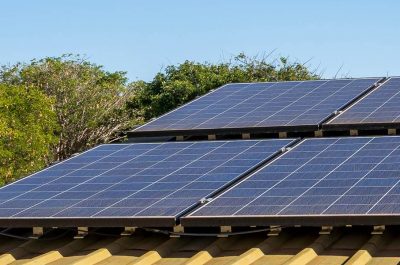Time to accelerate – AEMC hits go on smart meter rollout
Last week the Australian Energy Market Commission (AEMC) published its Final Determination on the Accelerating smart meter deployment rule change. The rule change determination follows on from the AEMC’s review on the regulatory framework for metering services that began in 2020, signifying the cumulation of four years of work and extensive consultation.
Smart meters modernise the energy grid, improve network planning, and expand the range of data that is available.
The accelerated rollout seeks to achieve universal uptake of smart meters by 1 December 2030. Table 1 outlines the current remotely-read meter installation numbers, noting the completed Victoria rollout and Tasmania’s earlier rollout that’s expected to finish by the end of 2026.
Table 1: Overview of Current Smart Meters Installed
| Jurisdiction | Remotely-read meter count | % remotely-read meters |
| ACT | 93,344 | 40.27% |
| NSW | 1,929,057 | 39.17% |
| QLD | 1,285,299 | 42.63% |
| SA | 488,325 | 46.49% |
| TAS | 279,296 | 78.06% |
| VIC | 3,247,638 | 99.12% |
| Total | 7,322,959 | 56.96% |
Source: AEMC Final Determination Media Release
Why are smart meters important?
Prior to the AEMC’s draft determination, ENA published an article on some of the benefits of smart meters and how they are crucial for the future grid as they enable greater visibility, reliability, and sustainability. Smart meters upgrade households to join a future energy system, hence the name ‘smart’. Some of the benefits include:
- faster network restoration times
- remote meter reads, avoiding the need for manual meter reads
- improved network visibility, assisting in network planning and additional safety benefits
- better integration of customers’ assets, including rooftop solar, storage and electric vehicles, and
- expanded access to a broader range of available tariffs.
Consumer safeguards
Strong customer safeguards are key to a successful rollout of smart meters.
The AEMC has introduced a customer two-year explicit informed consent period where retailers must obtain the explicit consent from a customer to change their retail tariff structure after a smart meter is installed. The customers consent lasts for two years, after which the retailer can update the retail tariff without the requirement for explicit informed consent, but, importantly, the retailer must still provide 30 days’ notice and a historical bill estimate to the customer. This safeguard is a transitional rule and will apply from 1 December 2025 until 31 May 2031.
In addition, retailers must also provide smart meter customers with a flat tariff option in those jurisdictions that have adopted the measure through local instruments. In September, Queensland adopted measures for electricity retailers to offer a flat tariff structure, thereby making the rule effective in this jurisdiction.
These safeguards are in addition to rules protecting customers from upfront charges and ensuring that they are provided sufficient notice and information prior to a smart meter installation.
Important network changes
Distribution network service providers (DNSPs) will play an important coordination role through the publication of Legacy Meter Replacement Plans (LMRP). The LMRPs will outline the total number of meters to be replaced each year and the proposed groupings (either by postcode or suburb), and will be developed through consultation with retailers, metering coordinators (MCs) and other stakeholders.
DNSPs have until 30 June 2025, to consult, draft and submit LMRPs to the AER to approve by August 2025, ready for the 1 December 2025 commencement date of the smart meter rollout. Retailers will have interim targets to help to keep on track of progress, with civil penalties only applying for any remaining meter replacements after the LMRP period concludes.
The data smart meters unlock, referred to as power quality data (PQD), is an important tool for network planning and safety. DNSPs will have access to basic PQD free of direct charge from 1 July 2026, with advanced PQD provided under commercial arrangements with providers.
Next Steps
Some of the AEMC’s review are being progressed through an additional rule change process. In October, the AEMC published a consultation paper on Energy Consumer Australia’s separate rule change request to improve real-time data access for customers. The final determination for this rule change is expected in August 2025.
This AEMC determination signifies a landmark regulatory change to modernise the energy grid, unlocking technology to achieve net zero targets. The new safeguard provisions ensure consumers are protected and empowered through the process, helping to achieve a successful rollout.


